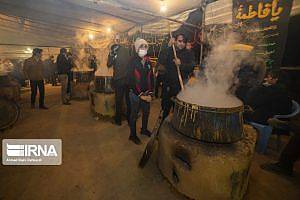Religious practices and rituals are one of the backbones of traditional culture in Iran. For example, Iran hosts many pilgrimage sites, both Islamic and belonging to other religions including Zoroastrianism, Judaism and Christianity.
Each year, these sites attract millions of Iranian and foreign pilgrims, to the extent that religious tourism is a major sector of the Iranian tourism industry. Many religious rituals in Iran are performed publicly and on a daily, weekly, or yearly basis.
These include (among Islamic rituals and practices) daily public prayers in mosques; mourning ceremonies for the 3rd, 7th, and 40th days after a death; widespread Friday prayers held every week; the rituals of the Holy Month of Ramadan; and the mourning ceremonies of the Holy Month of Muharram, encompassing a series of ceremonies for different groups of participants.
What all of these have in common, however, is that they generally take place in public and involve the gathering of large numbers of people including, in some cases, co-religionists from other regional countries.
The current pandemic crisis has resulted in stopping or limiting the activities in this sector. For example, Friday prayers have been cancelled for many weeks, which is highly significant in Iran where they have played a central socio-cultural role.
Daily prayers are still attended privately at home, and the Government has worked on devising policies for holding the Ramadan and Muharram rituals safely.
For more details and for images of the element, see website
The designations employed and the presentation in the texts and documents referenced in this platform do not imply the expression of any opinion whatsoever on the part of UNESCO concerning the legal status of any country, territory, city or area or of its authorities or concerning the delimitation of its frontiers or boundaries.
